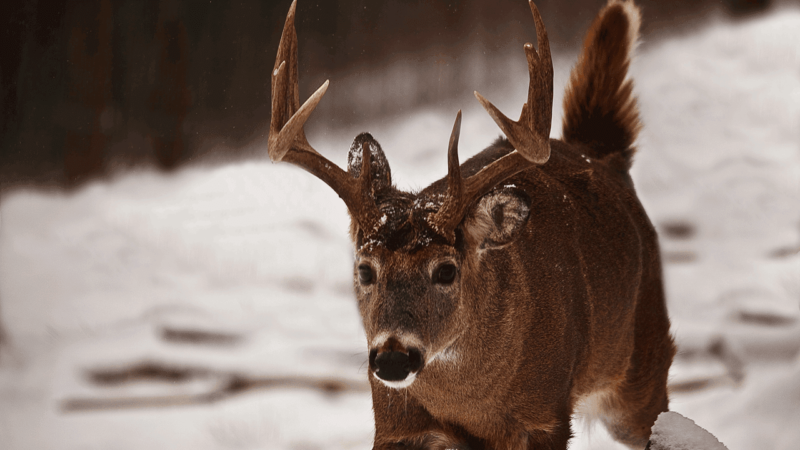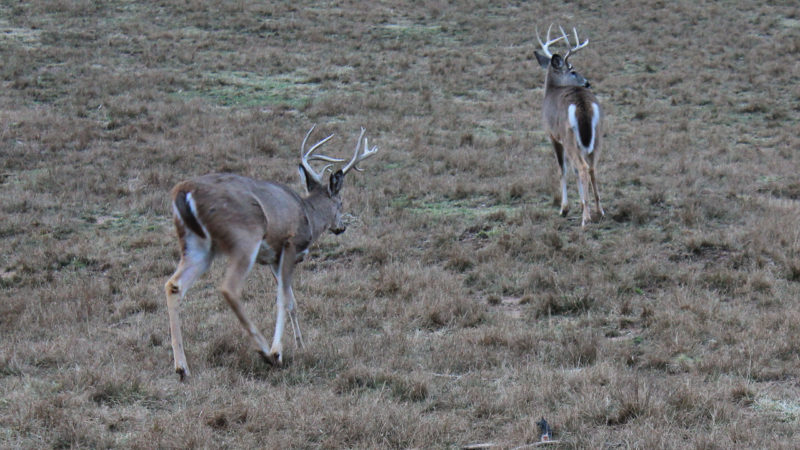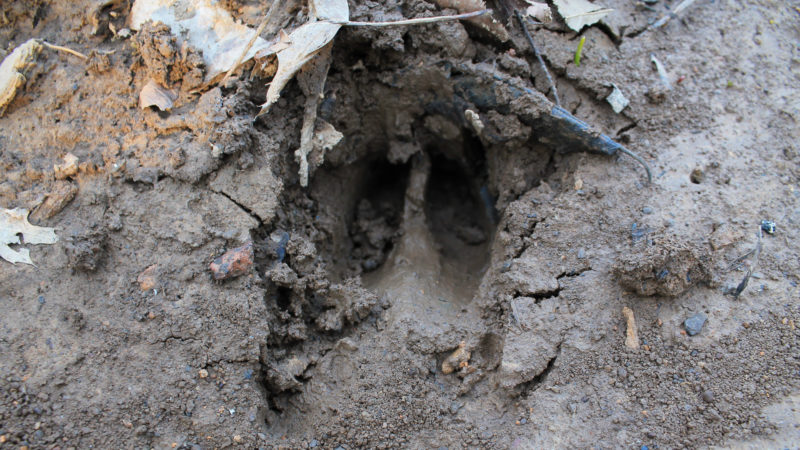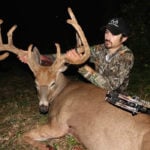Deer season is filled with change. While it’s actually a daily occurrence and factor, it happens on a more visible scale from week to week, and especially month to month. This leads to the delineation of the early season, pre-rut, rut, post-rut and late season.
Each of these phases see examples of significant change, but that which comes with the late season might be the most difficult to overcome. Things are different, a lot of dynamics are in play, but it’s crucial to stay ahead of bucks as we finish out the season.

Changing Times
The rut was a time of true madness. Bucks cruising, chasing and tending does is a sight to behold. In areas with healthy populations, good densities, and optimal buck-to-doe ratios, you can’t beat the experience hunters often witness.
That said, the late season holds little of that action. Deer are focused much less on breeding and much more on refueling from the rigors of the rut. Food is king again, and deer are transitioning back to groceries and grubs.
The lack of rut activity isn’t the only change. Now, deer are moving to different areas and using different parts of the landscape. We’ll cover this in more detail momentarily, but it’s certainly part of the equation.
The Dynamics in Play
Like at any time of the year, there are certain factors to consider. Deer hunting success is dictated by how hunters respond to certain things, including the following.
Hunting pressure is the biggest factor for the late season. Deer have felt its effects for several months now, and it is certainly impacting deer behavior. With severe cases of hunting pressure, it can completely discourage whitetails from using a particular area.
In such cases, security bedding cover is very important. Places that deer can retreat to and feel safe is a vital component of a good deer hunting property. If you don’t have that, you won’t see many deer.
Food sources are also changing. Deer aren’t hitting many of the lush food sources they gorged on earlier in the year. Now, it’s slimmer pickings. Late-season food sources to consider include waste grains (corn, soybeans, etc.), standing crops, brassicas (turnips, radishes, rapeseed, etc.), wheat, oats, clover, forbs, and woody browse. Deer are concentrate selectors, meaning that they eat the best parts of the best available plants. But in wintertime, most deer live primarily off of browse, such as tree buds, leaves, stems, and more.

While some bucks have winter ranges that overlap with fall hunts, not all do. Still, it’s something to keep in mind. If you’re hunting a specific deer, and you know that it generally relocates during the late season, that’s something to keep in mind.
Bedding areas are also changing. Some of this is due to hunting pressure, but some of it is simply deer using the added advantages of these new spots. In hill country, some beds are located at higher elevations. These spots enjoy visual, audible and winding advantages.
Some of these even offer solar or thermal cover. Solar bedding receives more sunlight, often found on east- and south-facing slopes. Thermal cover is cover-based, and is generally depicted by heavy volumes of cedars and other coniferous trees that help retain heat closer to the ground.
Yarding is another aspect of the late season, but this is usually a factor for those chasing deer in northern states, and less likely to be of concern in southern destinations.
Staying a Step Ahead
In-the-field sightings have never been lower. Neighboring hunters have shot a lot of deer. Trail camera activity is in the pits. While it might seem there’s little chance of still filling a tag, bowhunters can still stay ahead of the deer they’ve been chasing all year. It just takes extra effort to find deer in the unpressured pockets they now inhabit.
Glassing from afar is a great way to see what deer are doing, too. There’s nothing like being able to watch how a deer behaves, reacts to other deer, and maneuvers the landscape.
Trail camera intel helps with scouting efforts, but it isn’t as valuable as glassing from afar. Still, these tools are very important for success. Taking inventory of what deer have lived through the rut, drilling down on bedding areas, confirming existing travel patterns, and much more are all part of the process.

Property knowledge is another biggy. Knowing the landscape, and understanding where key terrain features are located — such as benches, ridges, saddles, pinch points, and more — is a big part of everyday life as a late-season deer hunter.
Historical information from past seasons is a very beneficial aspect, especially hunting a specific target buck that you have history with. Oftentimes, deer exhibit habits within the confines of their comfort zones.
Having trouble finding deer? Try small, unpressured pockets of security cover. Places to consider include cedar thickets, clear cuts, CRP, flooded timber, islands of cover, leeward ridges, marshes, oxbows, ridge points, and more.
Final Thoughts
Once you’re on deer, the next phase is patterning them. Anticipating these patterns is the most difficult part of the hunt. You have to get inside the mind of a late-season buck, determine what deer will be doing… before they do it. Of course, that’s easier said than accomplished, but it’s part of the late-season shift. Don’t like it? Start tagging out sooner.

 By
By 



